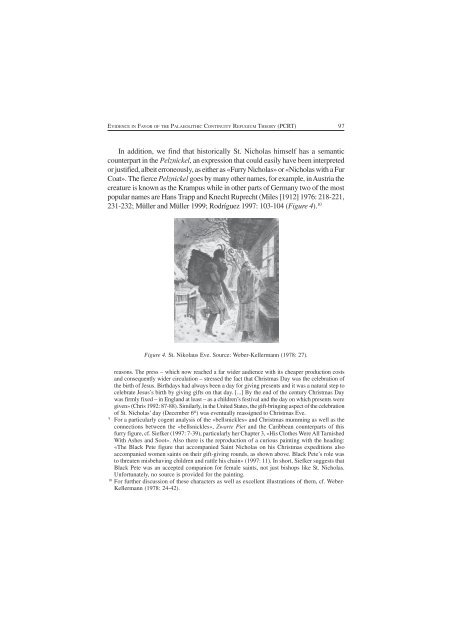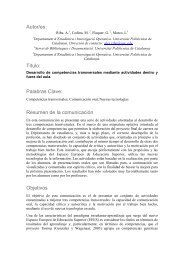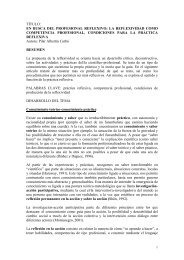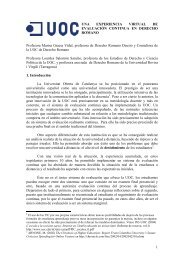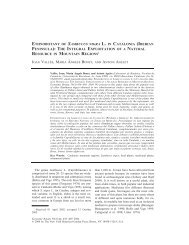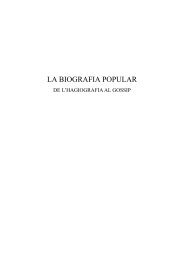Impaginato 5.p65 - Universitat Rovira i Virgili
Impaginato 5.p65 - Universitat Rovira i Virgili
Impaginato 5.p65 - Universitat Rovira i Virgili
Create successful ePaper yourself
Turn your PDF publications into a flip-book with our unique Google optimized e-Paper software.
EVIDENCE IN FAVOR OF THE PALAEOLITHIC CONTINUITY REFUGIUM THEORY (PCRT)<br />
In addition, we find that historically St. Nicholas himself has a semantic<br />
counterpart in the Pelznickel, an expression that could easily have been interpreted<br />
or justified, albeit erroneously, as either as «Furry Nicholas» or «Nicholas with a Fur<br />
Coat». The fierce Pelznickel goes by many other names, for example, in Austria the<br />
creature is known as the Krampus while in other parts of Germany two of the most<br />
popular names are Hans Trapp and Knecht Ruprecht (Miles [1912] 1976: 218-221,<br />
231-232; Müller and Müller 1999; Rodríguez 1997: 103-104 (Figure 4). 10<br />
Figure 4. St. Nikolaus Eve. Source: Weber-Kellermann (1978: 27).<br />
reasons. The press – which now reached a far wider audience with its cheaper production costs<br />
and consequently wider circulation – stressed the fact that Christmas Day was the celebration of<br />
the birth of Jesus. Birthdays had always been a day for giving presents and it was a natural step to<br />
celebrate Jesus’s birth by giving gifts on that day. [...] By the end of the century Christmas Day<br />
was firmly fixed – in England at least – as a children’s festival and the day on which presents were<br />
given» (Chris 1992: 87-88). Similarly, in the United States, the gift-bringing aspect of the celebration<br />
of St. Nicholas’ day (December 6 th ) was eventually reassigned to Christmas Eve.<br />
9 For a particularly cogent analysis of the «bellsnickles» and Christmas mumming as well as the<br />
connections between the «bellsnickles», Zwarte Piet and the Caribbean counterparts of this<br />
furry figure, cf. Siefker (1997: 7-39), particularly her Chapter 3, «His Clothes Were All Tarnished<br />
With Ashes and Soot». Also there is the reproduction of a curious painting with the heading:<br />
«The Black Pete figure that accompanied Saint Nicholas on his Christmas expeditions also<br />
accompanied women saints on their gift-giving rounds, as shown above. Black Pete’s role was<br />
to threaten misbehaving children and rattle his chain» (1997: 11). In short, Siefker suggests that<br />
Black Pete was an accepted companion for female saints, not just bishops like St. Nicholas.<br />
Unfortunately, no source is provided for the painting.<br />
10 For further discussion of these characters as well as excellent illustrations of them, cf. Weber-<br />
Kellermann (1978: 24-42).<br />
97


